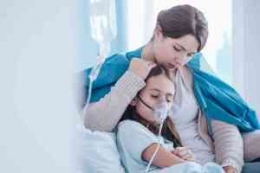Mycoplasma pneumonia is a common respiratory infection caused by the bacterium Mycoplasma pneumoniae.
It is the most common cause of bacterial pneumonia in children and young adults. Symptoms of mycoplasma pneumonia include fever, cough, shortness of breath, and chest pain.
The infection is usually mild and goes away on its own within a few weeks, but it can be serious in some cases.
Mycoplasma pneumonia is spread through respiratory droplets produced when an infected person coughs or sneezes.
It can also be spread through contact with contaminated surfaces. The infection is more likely to spread in crowded or poorly ventilated areas.
There is no vaccine for mycoplasma pneumonia. Treatment is usually with antibiotics.
Schools are a common place for the spread of mycoplasma pneumonia. This is because students are often in close contact with each other and they may not always practice good hygiene.
Puskesmas, or public health centers, play an important role in preventing the spread of mycoplasma pneumonia. Puskesmas can provide education and information about the infection to students and parents. They can also offer screening and treatment for mycoplasma pneumonia.
Collaboration between schools and Puskesmas is essential to prevent the spread of mycoplasma pneumonia. Together, they can work to educate students and parents about the infection, promote good hygiene practices, and provide screening and treatment for those who are infected.
How Schools Can Help Prevent Mycoplasma Pneumonia
Schools can help prevent mycoplasma pneumonia by taking the following steps:
- Educate students and parents about the infection. Schools should teach students about the symptoms of mycoplasma pneumonia, how it spreads, and how to prevent it. They should also encourage parents to talk to their children about the infection.
- Promote good hygiene practices. Schools should encourage students to wash their hands frequently with soap and water, especially after using the bathroom, blowing their nose, or coughing. They should also provide hand sanitizer for students to use.
- Implement measures to reduce the spread of respiratory droplets. Schools should encourage students to cover their mouths and noses when they cough or sneeze. They should also clean and disinfect surfaces and objects that may be contaminated with respiratory droplets.
How Puskesmas Can Help Prevent Mycoplasma Pneumonia
Puskesmas can help prevent mycoplasma pneumonia by taking the following steps:
- Provide education and information about the infection. Puskesmas should offer education and information about mycoplasma pneumonia to students, parents, and teachers. They should also provide information about how to prevent the infection.
- Offer screening and treatment for mycoplasma pneumonia. Puskesmas should offer screening and treatment for mycoplasma pneumonia to students who are at risk of infection.
Conclusion
Collaboration between schools and Puskesmas is essential to prevent the spread of mycoplasma pneumonia. By working together, they can educate students and parents about the infection, promote good hygiene practices, and provide screening and treatment for those who are infected.
Additional Recommendations
In addition to the steps outlined above, schools and Puskesmas can also consider the following recommendations to help prevent the spread of mycoplasma pneumonia:
- Implement measures to reduce the number of people in close contact with each other. This could include staggering class schedules, increasing the amount of space between desks, and limiting the number of people in crowded areas.
- Use air purifiers to help remove respiratory droplets from the air.
- Test students for mycoplasma pneumonia at the beginning of the school year. This could help identify students who are infected and may be contagious.
By taking these steps, schools and Puskesmas can work together to create a healthier environment for students and prevent the spread of mycoplasma pneumonia.
Baca konten-konten menarik Kompasiana langsung dari smartphone kamu. Follow channel WhatsApp Kompasiana sekarang di sini: https://whatsapp.com/channel/0029VaYjYaL4Spk7WflFYJ2H









